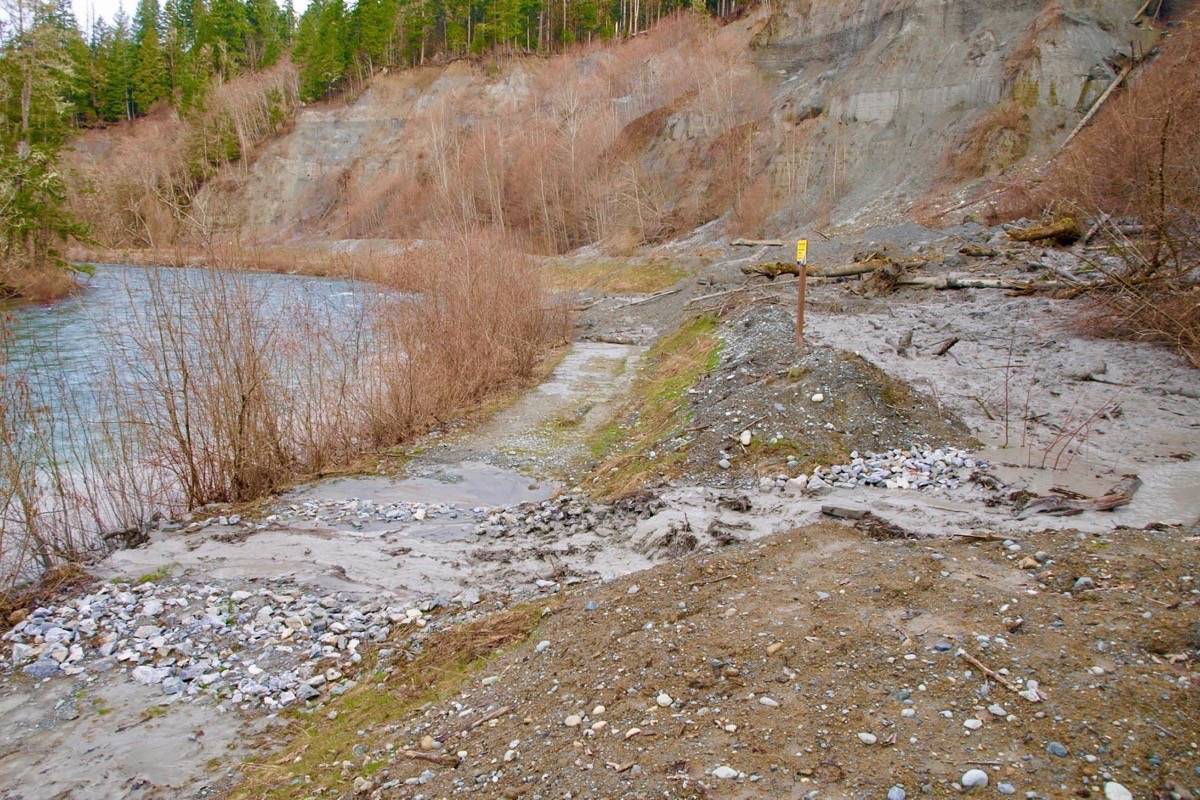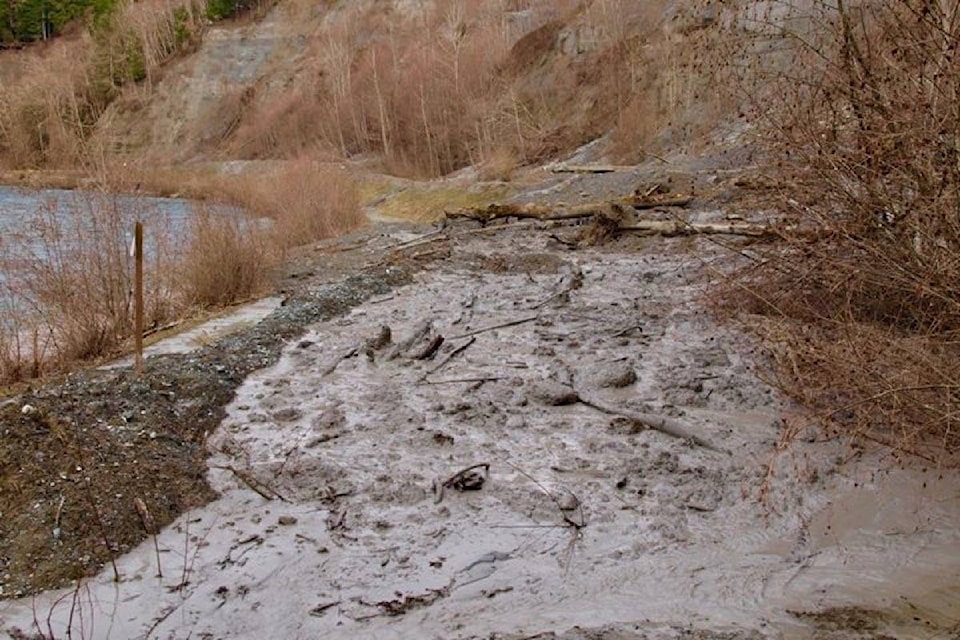The winter of 2016-17 may go down in the record books for its crazy precipitation but for Cowichan River watchers, another problem has showed up.
According to Parker Jefferson, of the Cowichan Lake and River Stewardship and several other groups, heavy rain and melting snow have caused a mudslide at Stoltz Bluffs along the river, midway between Lake Cowichan and Duncan.
A big Stoltz Bluffs Remediation Project was done in 2006 and it has kept severe problems at bay till now.
“It was designed to stop that really big clay bank from falling into the river every winter when the water went up. But, there’s just been a massive slide up there,” Jefferson said last week.
“How that project was originally done was that they basically rip-rapped the river and the shore [a process for armouring shorelines against erosion] and then built a berm behind the bank that’s probably seven or eight feet high. That berm was designed to hold the sloughing clay. So, it was like a settling pond. It was quite large: several hundred feet long and about a hundred feet wide or so, and it’s been quite adequate. They’ve only had to go in every couple of years with an excavator and dig the muck out once it gets to the top of the berm or close to it. Then they dig out the mud and they pile it on top of the berm to make it higher.
“That’s what they’ve been doing in terms of maintenance but with these huge slides that have come down in the last month or so it has filled the whole thing up to overflowing. And it’s all full of big broken maple trees and all kinds of other stuff. It’s just filled up the whole containment pond and overtopped the berm and then sort of went right into the river,” he said.
The problem is that there is no containment, Jefferson said.
“The pond is designed to just settle out. And it worked pretty well up to this year. There’s a creek comes down, unfortunately and the slide’s come down. It’s a totally unstable bank but it’s working its way back and we’re hoping it makes its way to a stable position where it kind of stops doing all this nonsense.”
It works like any other holding pond, he said. Most stuff settles and then there’s an overflow at the downstream end of it “that the creek has always come out of”.
Jefferson knows the location well.
“I steelhead fish in that area and over the last few years I’ve been watching what’s been happening. Whenever it rains, you’d get a little bit coming out of that overflow creek but as soon as it stopped raining and that little creek stopped flowing then the river would clear up.
“However, now, with that massive slide, it’s going to take some doing to clean up,” he said. “There are several slides on the road into it and then the big one which is in the containment pond area.”
Cleanup could be challenging, he said.
“I don’t know if they can even dig that stuff out and put it on top of the berm because there is so much of it, with those big trunks of maple trees and all. They might have to truck it out or something. I don’t know who is exactly responsible for this. It’s right in the B.C. provincial park and the regional park manager is aware of it. But it’s really going to be into the spring before anything can be done.”
Jefferson is hopeful that steelhead will swim right past the area to spawn.
“It’s kind of unfortunate because now it’s doing much like it used to do in the old days, and it’s depositing a lot of silt. Just below there is one of the best little steelhead fishing areas. I was up in there yesterday and the silt is starting to fill in the gravel. That’s why the work was done to start with: when the silt fills in the gravel it smothers the fish eggs.
“Now it’s the spawning time for steelhead and a lot of their spawning area is below Stoltz. It’s OK if they can get above and certainly a lot of them do get above and spawn up above there. They may all just decide they can’t spawn there and keep going. And, as soon as they get past Stoltz, they are into clear water and it’s good conditions to spawn. But this is not going to help and right now the fry are just emerging. I guess we’ll just have to deal with it sometime in the spring, I guess.”

